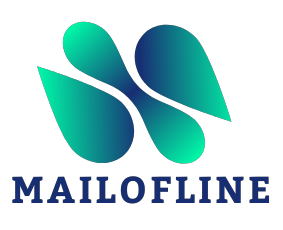Securing a small loan with poor credit can seem daunting, but it’s not impossible. Whether you need funds for an emergency, a personal project, or to consolidate debt, understanding how to improve your chances of qualifying for a loan despite a less-than-perfect credit history is crucial. This comprehensive guide will explore strategies for qualifying for small loans with bad credit, identify potential lenders, and offer practical tips to enhance your loan application.
Assessing Your Credit Situation
Before applying for best small loans with bad credit, it’s essential to understand your credit situation. It involves knowing your credit score, identifying the factors affecting it, and understanding how your credit history impacts loan eligibility.
● Check Your Credit Report
The first step is to review your credit report from major credit bureaus like Equifax, Experian, and TransUnion. This report includes your credit history, outstanding debts, and negative marks such as missed payments or bankruptcies. You can identify errors or discrepancies affecting your score by checking your report and working to correct them.
● Know Your Credit Score
Your credit score numerically represents your creditworthiness, usually 300 to 850. While the exact threshold for “poor” credit can vary, a score below 580 is generally considered poor. Understanding where you stand can help you target lenders specialising in working with borrowers with low credit scores.
● Understand Credit Factors
Several factors impact your credit score, including payment history, credit utilisation, the length of your credit history, the types of credit accounts you hold, and recent credit inquiries. You can gradually improve your credit score by improving these factors, such as paying bills on time and reducing outstanding debt.
Exploring Loan Options for Poor Credit
Once you understand your credit situation, the next step is to explore loan options that cater to individuals with poor credit. Different types of loans may have varying eligibility criteria, so choosing one that aligns with your financial needs and credit profile is essential.
● Secured Loans
Secured loans require collateral, such as a car, savings account, or other assets. Because these loans are backed by collateral, lenders may be more willing to approve them for individuals with poor credit. If you default on the loan, the lender can seize the collateral, which reduces their risk. However, ensuring you meet the repayment terms is crucial to avoid losing your assets.
● Co-Signed Loans
A co-signed loan involves another person—usually someone with good credit—signing the loan agreement alongside you. This co-signer agrees to repay the loan if you cannot do so. Having a co-signer can increase your chances of approval and may result in better loan terms, but it also places a financial burden on the co-signer if you default.
● Peer-to-Peer Loans
Peer-to-peer (P2P) lending platforms connect borrowers with individual investors who fund loans. These platforms typically offer more flexible requirements than traditional banks. While interest rates may be higher, P2P lending can be a viable option for those with poor credit. Compare different P2P lenders and read reviews to find a reputable platform.
● Credit Union Loans
Credit unions are non-profit organisations that often provide more favourable loan terms to their members, including those with poor credit. Membership requirements vary, so you may need to join a credit union before applying. Credit unions typically offer lower interest rates and more personalised service, making them a good option for borrowers with bad credit.
Finding the Best Small Loans with Bad Credit
When looking for the best small loans with bad credit, comparing different lenders and loan options is essential. Here are several strategies to identify the most suitable loan for your circumstances:
● Compare Interest Rates
Interest rates can vary significantly between lenders, especially borrowers with poor credit. Compare rates from multiple lenders to ensure you’re getting the best deal. Be aware of any fees or hidden costs associated with the loan.
● Read the Fine Print
Thoroughly examine the terms and conditions of any loan offer. Pay attention to the repayment schedule, interest rates, fees, and early or late payment penalties. Understanding the total cost of the loan can help you make an informed decision.
● Check Lender Reviews
Research potential lenders by reading reviews from other borrowers. Solicit feedback regarding customer service quality, loan processing durations, and overall satisfaction with our services. Avoid lenders with a history of negative reviews or questionable practices.
● Consider Loan Alternatives
If traditional loans aren’t an option, consider alternative funding sources, such as borrowing from family or friends or exploring government assistance programs. These alternatives may offer more favourable terms and help you avoid high-interest loans.
Conclusion
Qualifying for a small loan with poor credit requires a strategic approach, but it is achievable with the proper preparation and knowledge. By understanding your credit situation, exploring various loan options, improving your application, and carefully selecting the best lender, you can increase your chances of securing the funds you need. Remember to review all terms and conditions thoroughly and consider alternatives if necessary. With these strategies, you can navigate the loan process more confidently and find a solution that suits your financial needs.

